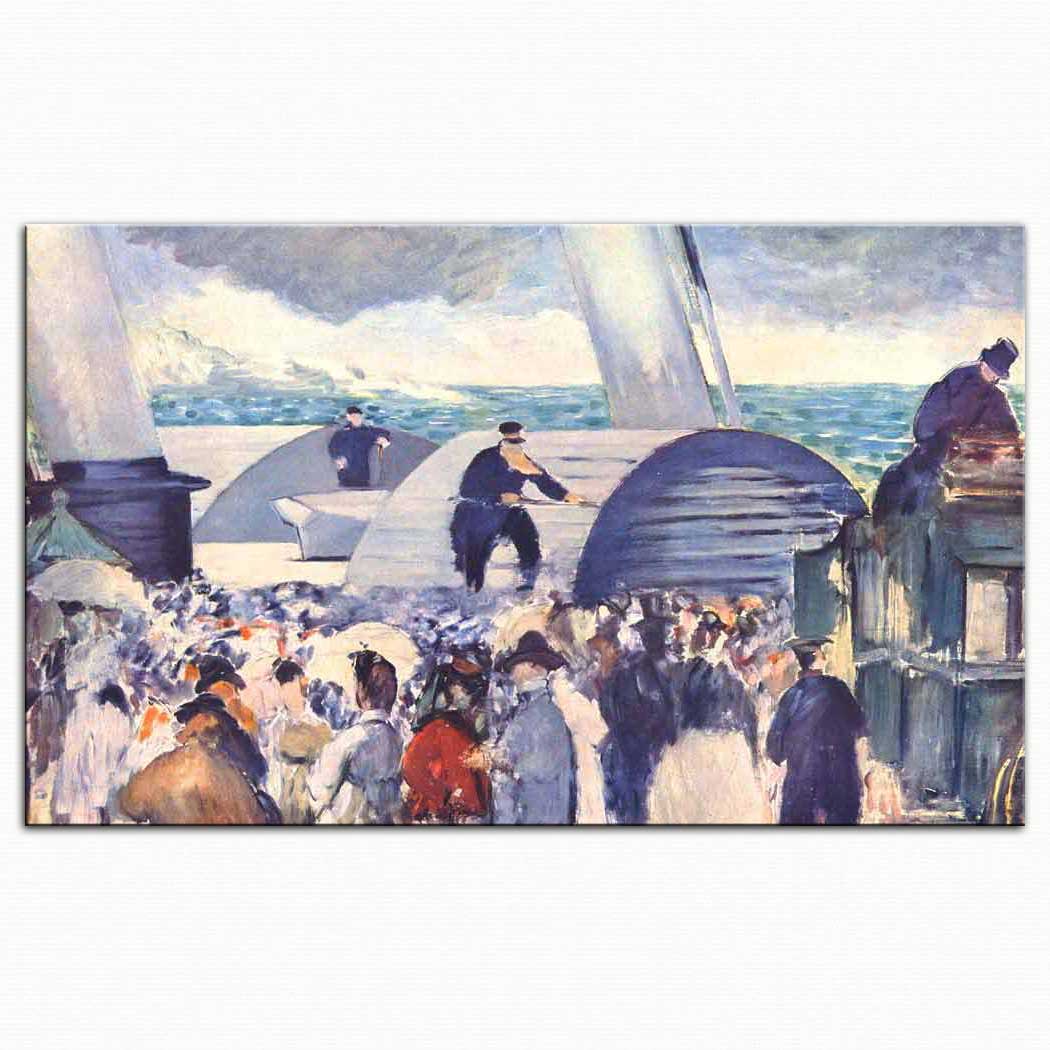

However, for a better understanding of why Manet’s painting was rejected and why it was so avant-garde for its time, we need to know a bit more about what the Academic standards for paintings were. 1: The White Girl (1862) by James McNeill Whistler James McNeill Whistler, Public domain, via Wikimedia Commons This is what made Manet’s painting appear so risqué. 1861/1862), Camille Pissarro, Gustave Courbet, and others – he similarly rejected the status quo of what was acceptable to paint and the rules to adhere by. Although many critiqued the paintings exhibited here, it nonetheless introduced the avant-garde in art.Īs much as the Parisian art institutions rejected Manet’s Luncheon on the Grass – including other artists like James McNeill Whistler’s Symphony in White, No.1: The White Girl (c. This is when the Salon des Refusés came into effect. The Palais de l’Industrie, where the exhibition event took place, 1850s-1860s Édouard Baldus, CC0, via Wikimedia Commonsĭuring this time Emperor Napoleon III ruled France and he tentatively allowed a new exhibition off-shoot to open after numerous complaints about rejected artworks by the Salon. This was an exhibition for all the paintings that were rejected for display by the Salon in Paris. Subsequently, it was exhibited at the Salon des Refusés, which means “Exhibition of Rejects”. When Manet sought to exhibit Luncheon on the Grass at the Salon, which was the leading exhibitory group for art in Paris, in 1863 it was rejected. It followed the form and structures tied to Classical Antiquity and the Renaissance. This was a time when the French Academy, known as the Académie des Beaux-Arts, reigned over the standards of painting, which was also referred to as Academic Painting. When Édouard Manet painted Luncheon on the Grass it was during the 1800s in France. ArtistĬontextual Analysis: A Brief Socio-Historical Overview We will then discuss a formal analysis looking more at the subject matter and stylistic approaches Manet took, which ultimately made this one of the most famous artworks to date. In the article below, we will provide an analysis of the Le Déjeuner sur l’herbe meaning by first discussing a brief background of when it was painted and exhibited, and what motivated Manet. Le Déjeuner sur l’herbe (“ Luncheon on the Grass”) (1863) by Édouard Manet Édouard Manet, Public domain, via Wikimedia Commons What was initially titled The Bath ( Le Bain) and is now known as Le Déjeuner sur l’herbe, meaning “The Luncheon on the Grass”, Manet’s famous scene of a nude female picnicking with two males has become an icon of painting beyond the established rules of painting. Édouard Manet was one of the forerunners to move away from the academic rules of painting and showed the world a glimpse of what a new, modern, painting style looked like. Le Déjeuner sur l’herbe (1863) by Édouard Manet in Context He died in April 1883.Ĭlose-up photograph of artist Édouard Manet, before 1870 Nadar, Public domain, via Wikimedia Commons Manet was remembered as being part of the Realism art followed by Impressionism. He became known as one of the most prominent artists of Modernism and his famous artwork Le Déjeuner sur l’herbe (1863) caused an uproar because of his different new style. He reportedly also studied the “Old Masters” in the Louvre. Manet was exposed to numerous artists and scholars during his art career and traveled throughout Europe, including Italy. In 1856 Manet established an art studio of his own in Paris. A Parisian from birth, he was interested in art from a young age and started art classes at the Collège Rollin during 1841 and during 1850 Manet furthered his art studies through Thomas Couture’s tutelage. Édouard Manet was born on January 23, 1832. 7.3 Who Is the Woman In Manet’s Luncheon on the Grass (1863)?.7.2 Where Is Manet’s Luncheon on the Grass (1863) Painting Now?.7.1 Who Painted Luncheon on the Grass (1863)?.3 Formal Analysis: A Brief Compositional Overview.2.1 Contextual Analysis: A Brief Socio-Historical Overview.

2 Le Déjeuner sur l’herbe (1863) by Édouard Manet in Context.1 Artist Abstract: Who Was Édouard Manet?.


 0 kommentar(er)
0 kommentar(er)
